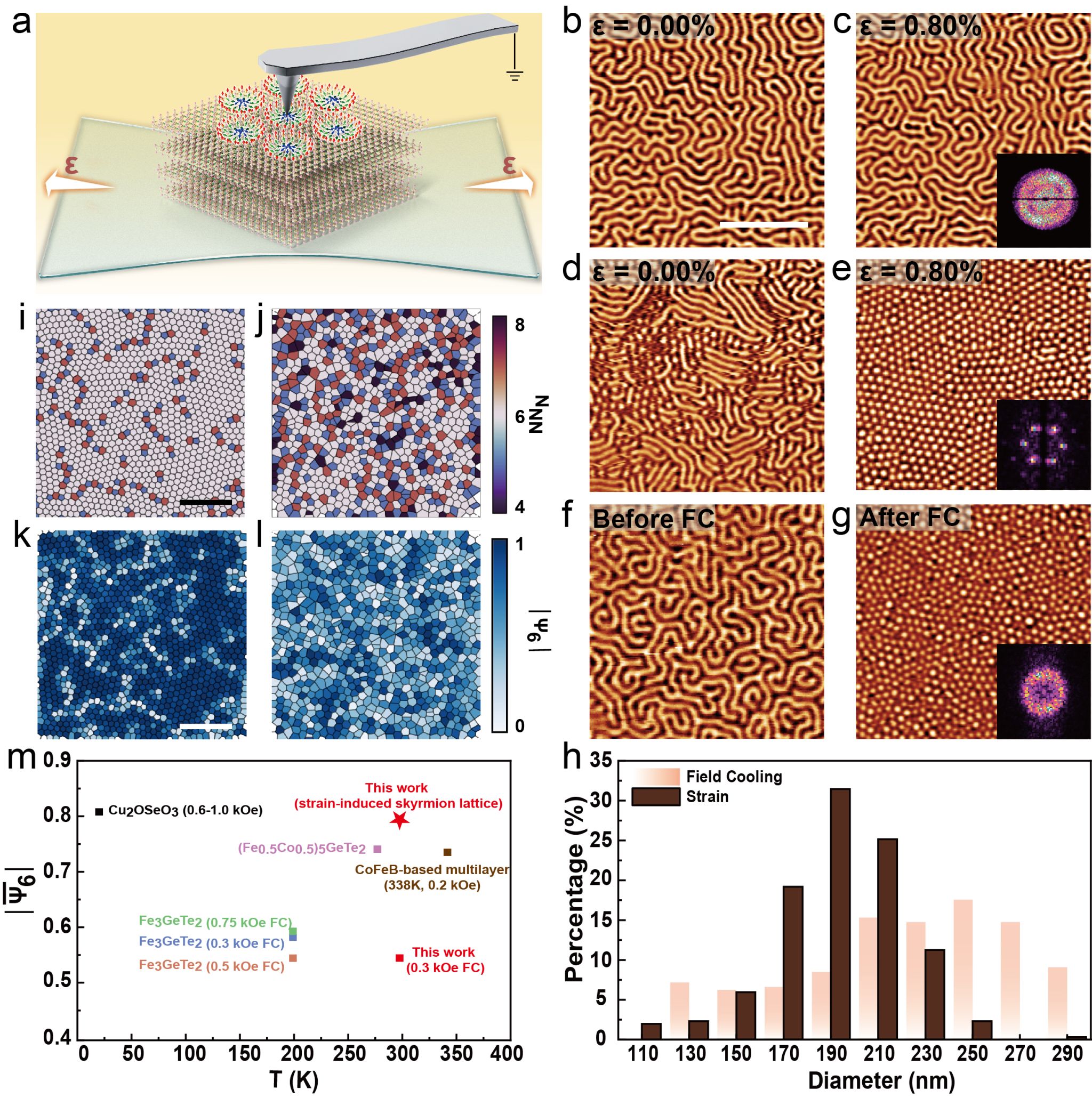Strain engineering technology successfully achieves the formation of stable skyrmion lattices at room temperature
Skyrmion is a nanoscale magnetic vortex structure with topological protection, and is hailed as an ideal candidate for future high-density, low-power information carriers. However, traditional regulation relies on strong magnetic fields or electric currents, and it is difficult to form an ordered lattice at room temperature. To this end, researchers used strain engineering technology to successfully achieve the transition from maze-like magnetic domains to highly ordered skyrmion lattices. More importantly, this skyrmion lattice exhibits excellent stability at room temperature, and can still maintain its structural integrity even after thousands of stretching, bending and torsion cycle tests, opening up a new path for the development of low-power flexible spin electronics devices.
Yu Ting 's research group at Wuhan University published a research article titled Strain-Induced Robust Skyrmion Lattice at Room Temperature in van der Waals Ferromagnet in Advanced Materials . They placed the room temperature two-dimensional ferromagnetic material Fe 3 GaTe 2 ( FGaT ) on a flexible substrate and demonstrated the strain-induced stable skyrmion lattice without external field. When a small strain was applied to the pre-annealed FGaT flake, the magnetic force microscope probe directly triggered the transition from the maze-like magnetic domains to the ordered skyrmion lattice during the scanning process of the sample surface. The skyrmion lattice showed excellent stability in a large number of cyclic mechanical tests (stretching, bending and twisting more than 2000 times each), and remained stable in a wide magnetic field range (≈ 2.9 kOe ) and temperature range (≈ 323 K ), and had long-term retention characteristics, which fully demonstrated its unexpected advantage of stability without external field. The strain effect stabilizes the skyrmion lattice by reducing the lattice symmetry and enhancing the Dzyaloshinskii-Moriya interaction of the system. This discovery provides an important technical path for integrating magnetic skyrmions into future low-power flexible spintronic devices.

Paper information:
Strain-Induced Robust Skyrmion Lattice at Room Temperature in van der Waals Ferromagnet
Xinyi Zhou, Iftikhar Ahmed Malik, Ruihuan Duan, Hanqing Shi, Chen Liu, Yan Luo, Yue Sun, Ruixi Chen, Yilin Liu, Shian Xia, Vanessa Li Zhang, Sheng Liu*, Chao Zhu, Xixiang Zhang, Yi Du, Zheng Liu*, Ting Yu*
Advanced Materials